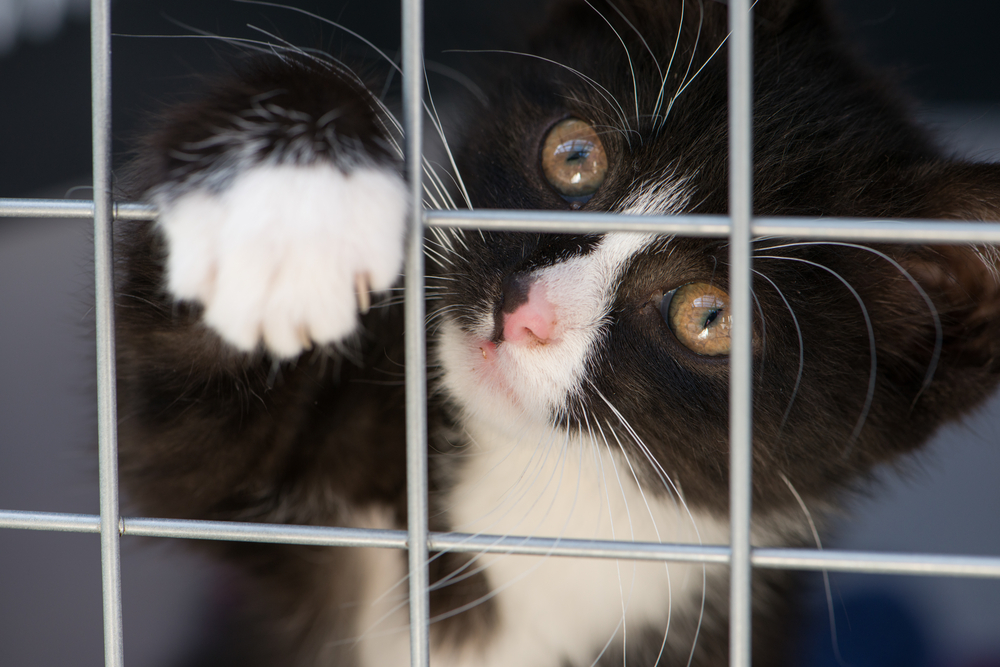Kim Campbell Thornton
When cat-loving veterinarians Kate Hurley and Julie Levy began the Million Cat Challenge in 2014, they gave themselves five years to achieve the goal of saving an additional one million cats from euthanasia in shelters. They met their goal in 2018, more than a year early, and have since doubled it, saving the lives of more than two million shelter cats who now have homes, jobs, or safe places to live.
Cats in shelters, especially adults and seniors, are often overlooked by people seeking pets. Feral cats in particular may be unsuited to home life because they are fearful of humans or simply prefer an outdoor life on their own terms. Dr. Hurley, director of UC Davis Koret Shelter Medicine Program, and Dr. Levy, professor of shelter medicine at University of Florida, were attuned to the plight of cats in shelters and wanted to open the door to creative solutions to finding them homes.
“As we talked about the status of cats in shelters at the time and what our goal could be to pretty rapidly change that status, we came up with the idea of shelters collectively saving a million more cats in five years,” Levy says.
Not just a million cats. A million more cats.
How They Did It
Hurley, Levy, and Jon Cicirelli, director of Animal Care and Services for San Jose,
California, believed a tipping point for cats in shelters was at hand when they presented a session on saving shelter cats at Humane Expo in 2012. Rethinking who cats are, how they need to be managed, and shifting the ways resources were used could all help to enable investment in cat-specific programs that reflected the reality of a large population of free-roaming unowned and semi-owned cats.
Afterward, Levy says, “The room was electrified. Over a thousand people turned in little cards, pledging how many more cats they could save.”
Five key initiatives guided the plan: alternatives to intake, managed admissions, capacity for care, removing adoption barriers, and return to field. That meant seeking ways to help keep animals in homes they already had; scheduling intake of cats to prevent overcrowding; ensuring that the number of cats in the shelter wasn’t overwhelming and that they were properly housed; making adoptions easier; and returning healthy, un-owned cats to their original locations after vaccinating and sterilizing them.
Each initiative could be adopted singly or together by any type or size of shelter with any kind of budget in any kind of area.
“All of our conference presentations and one-on-one consulting have been highly focused around those five initiatives and helping shelters figure out which of the five are most appropriate for them and then helping them overcome any barriers to implementing them,” Levy says.
Let Cats Decide
Greater recognition of feline individuality and needs contributed to changes in the way cats were housed and placed.
“There was a time in shelters when there was a trend toward putting cats behind glass as a way of protecting them from pokey little fingers,” Hurley says. “What we recognized is that it’s really important for cats to be able to reach out and touch someone, to have the opportunity to rub up against the front of their cage and put their little hand through the bars and paw their potential future adopter to say, ‘Hey, pick me.’”
They also took into account feline personalities and backgrounds when it came to placement. Adoption into a traditional home isn’t necessarily the best choice for every cat.
Imagine interviewing cats as they come into a shelter. Some cats would sign up immediately for a cushy sofa, a window to look out, and two squares a day. Others would turn tail and head out the door if presented with that option. And maybe that’s where they should go.
Healthy, free-roaming cats may do best if they are returned to the place where they were already doing well, Hurley says. Other alternatives include barn, warehouse, and other “working cat” programs.
That allows shelter staff to put resources toward finding homes for cats accustomed to indoor life whose people have died or can no longer keep them.
Breaking Barriers
When cats are happier, adopters respond. The cats are more outgoing, healthier, less stressed, and play more. People who see those cats become more willing to visit shelters in search of a cat. Maybe more important, they tell their friends.
It’s one of the results of the “capacity for care” initiative.
“From a Fear Free perspective, it speaks to providing housing that enables us to meet the Five Freedoms for cats: keeping their litter box separate from their food and giving them a little space to have a bed and room to move around,” Hurley says.
That’s important for the cats, but it also makes it easier for people to visit a shelter because they’re less likely to come away feeling sad.
A related piece of the puzzle is removing barriers such as high fees, restrictive visitation hours, or strict adoption requirements. One of the goals of the Million Cat Challenge is to make adoption a friendly process. Successful programs include mobile adoption vans that take cats out into the community where they can be seen by people who might not go to a shelter and foster-to-adopt programs that let people test drive living with a cat.
And simply telling cats’ stories has engaged the public in ways Hurley says she could never have imagined when she was first working in shelters 25 years ago.
“Never would it have occurred to me that we could adopt out a cat with one tooth or no eyes or FIV positive or 16 years old or bites a lot,” she says. “People are much more open to opening their homes and their hearts to all kinds of special critters, I think, when we invite them in and let them know what the need is.”
This article was reviewed/edited by board-certified veterinary behaviorist Dr. Kenneth Martin and/or veterinary technician specialist in behavior Debbie Martin, LVT.
Kim Campbell Thornton is content manager for Fear Free Pets and is a Level 3 Fear Free Certified Professional. She has been writing about dogs, cats, wildlife and marine life since 1985 and is a recipient of multiple awards from the Cat Writers Association, Dog Writers Association of America, and American Society of Journalists and Authors. When she’s not writing or editing, she’s competing in nose work trials with Harper, a Cavalier King Charles Spaniel.




